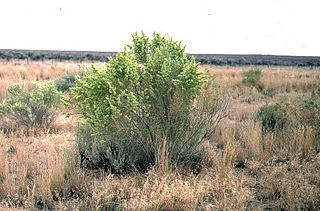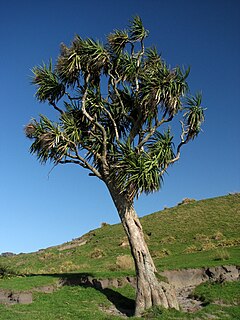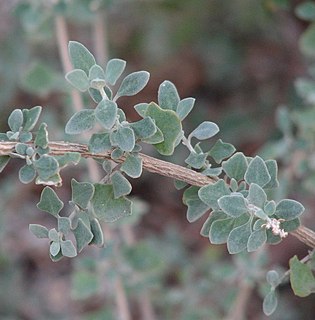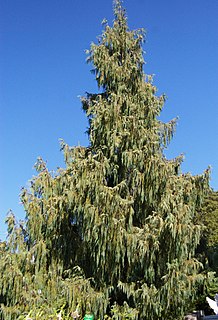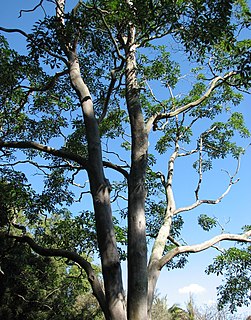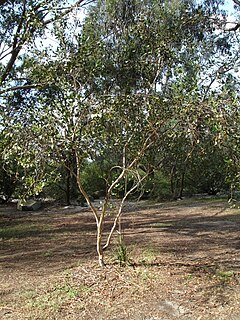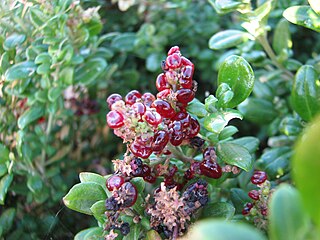| Climbing Saltbush | |
|---|---|
 | |
| Scientific classification | |
| Kingdom: | Plantae |
| (unranked): | Angiosperms |
| (unranked): | Eudicots |
| (unranked): | Core eudicots |
| Order: | Caryophyllales |
| Family: | Amaranthaceae |
| Subfamily: | Chenopodioideae |
| Tribe: | Atripliceae |
| Genus: | Chenopodium |
| Species: | C. nutans |
| Binomial name | |
| Chenopodium nutans (R.Br.) S.Fuentes & Borsch | |
| Synonyms [1] | |
| |
Chenopodium nutans [1] (Syn Einadia nutans,Rhagodia nutans), known by its common name of Climbing Saltbush or Nodding Saltbush, is a climbing groundcover native to Australia.

Groundcover or ground cover is any plant that grows over an area of ground. Groundcover provides protection of the topsoil from erosion and drought.

Australia, officially the Commonwealth of Australia, is a sovereign country comprising the mainland of the Australian continent, the island of Tasmania and numerous smaller islands. It is the largest country in Oceania and the world's sixth-largest country by total area. The neighbouring countries are Papua New Guinea, Indonesia and East Timor to the north; the Solomon Islands and Vanuatu to the north-east; and New Zealand to the south-east. The population of 25 million is highly urbanised and heavily concentrated on the eastern seaboard. Australia's capital is Canberra, and its largest city is Sydney. The country's other major metropolitan areas are Melbourne, Brisbane, Perth and Adelaide.
Plants form a blanket on the surface, climbing over logs and up trees to a height of around 1 metre. Each plant grows to around one metre in diameter. The small leaves are semi-succulent, and have a distinctive arrowhead shape. They grow along long, vine-like branches spreading out form the centre of the plant. Both the leaves and the branches are of a light green colour. [2]

An arrowhead is a tip, usually sharpened, added to an arrow to make it more deadly or to fulfill some special purpose. The earliest arrowheads were made of stone and of organic materials; as human civilization progressed other materials were used. Arrowheads are important archaeological artifacts; they are a subclass of projectile points. Modern enthusiasts still "produce over one million brand-new spear and arrow points per year". One who manufactures metal arrowheads is an arrowsmith.

Green is the color between blue and yellow on the visible spectrum. It is evoked by light which has a dominant wavelength of roughly 495–570 nm. In subtractive color systems, used in painting and color printing, it is created by a combination of yellow and blue, or yellow and cyan; in the RGB color model, used on television and computer screens, it is one of the additive primary colors, along with red and blue, which are mixed in different combinations to create all other colors. By far the largest contributor to green in nature is chlorophyll, the chemical by which plants photosynthesize and convert sunlight into chemical energy. Many creatures have adapted to their green environments by taking on a green hue themselves as camouflage. Several minerals have a green color, including the emerald, which is colored green by its chromium content.
Flowers are inconspicuous green balls, which form on top of terminal spikes during summer. These transform into very conspicuous, tiny, bright-red berries during early autumn.
